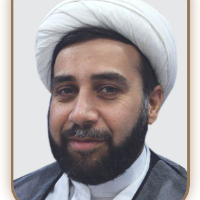علی عنایتی نوین فر
-
هدف اصلی این پژوهش، طراحی الگوی برنامه درسی مبتنی بر یادگیری مشارکتی در دانشگاههای علوم دینی مجازی است. این پژوهش از نوع پژوهشهای کیفی و مبتنی بر نظریه داده بنیاد بود که مشارکتکنندگان در آن متخصصان برنامه درسی، مدرسان و کارشناسان دانشگاههای قرآن و حدیث، جامعه المصطفی و امام خمینی بودند. بر مبنای منطق نمونهگیری هدفمند و با استفاده از شیوه ملاکمحور 31 نفر برای مصاحبه انتخاب شدند. تحلیل مصاحبهها به شیوه داده بنیاد، 145 کد باز، 82 کد محوری و هفت کد انتخابی را آشکار ساخت که نشان میدهد در برنامه درسی موجود این دانشگاهها به تعامل و مشارکت چندان توجه نشده است. بر اساس الگوی پیشنهادی، با استفاده از رویکرد یادگیری مشارکتی می توان عناصر برنامه درسی مجازی شامل محتوا، فعالیت های یادگیری و شیوه های ارزشیابی را به گونه ای طراحی کرد که معلمان از طریق شیوه های تعاملی و ایجاد مشارکت، تعاملات دانشجویان با محتواهای متنوع، دانشجویان و استاد را به صورت فردی و گروهی افزایش دهند. بسط تعاملات بین دانشجویان با استفاده از شیوه مشارکتی می تواند به شکل گیری اجتماع پژوهشی و بهبود کیفیت تجربه یادگیری دانشجویان کمک کند.
کلید واژگان: برنامه درسی, آموزش مجازی, یادگیری مشارکتی, علوم دینیThe main purpose of this study was to design a virtual curriculum model based on collaborative learning at the virtual religious universities. The study was a qualitative research according to the data-based theory. The research participants included experts and professors of the virtual curriculum at the Quran and Hadith University, al-Mustafa International University, and Imam Khomeini Education and Research Institute, who were selected using purposeful sampling method. Through criterion-based sampling method, 31 people of them were selected for interview. Data were analyzed through three open, axial, and selective coding stages that finally identified 145 open codes, 82 axial codes, and 7 selective codes, which showed that the existing curricula of these universities paid little attention to interaction and participation. According to the proposed model, using the collaborative learning approach, the elements of virtual curriculum, including content, learning activities, and evaluation methods, were designed in a way that that the teachers, through interactive and collaborative methods, could increase the students’ interactions with a variety of contents, with other students, and with the teachers themselves, individually and in groups. Developing interactions among students through a collaborative approach could help establish the research community and improve the quality of students’ learning experiences.
Keywords: curriculum, virtual learning, collaborative learning, Islamic sciences -
هدف از اجرای این پژوهش، استخراج مولفه های اثربخش برنامه درسی مجازی به منظور دست یابی به نقاط مشترک در تحقیقات پیشین و ارائه چهارچوبی از نحوه پیاده سازی برنامه درسی مجازی با رویکرد مشارکتی بود. روش پژوهش، کیفی بود و با استفاده از راهبرد سنتزپژوهی اجرا شد. جامعه آماری شامل منابع مرتبط با هدف پژوهش بود که درمجموع از بین 112 پژوهش، 49 نمونه به صورت هدفمند انتخاب شد. سپس مولفه های اثربخش برنامه درسی دانشگاه های مجازی استخراج شد و با تحلیل آنها چهارچوبی برای ارائه برنامه درسی مجازی در دانشگاه های مجازی ارائه داده شد. نتایج تحلیل نشان داد که مهم ترین مولفه های اثربخش؛ مولفه های مشارکت، مولفه های درون دادی، ارزشیابی، منطقی و زیرساخت ها بود. پس از آن، با بررسی و توصیف مولفه های اثربخش در برنامه درسی مجازی بر اساس رویکرد مشارکتی، نه عامل، شامل مولفه های بازده مشارکت، ترکیب گروه، فناوری، تکالیف شغلی، نقش های گروهی، فرایندها و آموزش ها، زمان، آموزش مهارت های گروهی، دانش پیشین یادگیرنده و مشوق ها شناسایی شد.کلید واژگان: سنتزپژوهی, برنامه درسی, دانشگاه های مجازی, رویکرد مشارکتیThe purpose of the present research was to extract the effective components of the virtual curriculum in order to achieve common points in previous research and present a framework for implementing virtual curriculum with collaborative approach. The research method is qualitative and based on the synthesis strategy. The statistical population consist of the resources related to the purpose of the research. In total, out of 112 researches, 49 samples were selected purposefully, and the effective components of the curriculum of virtual universities extracted and, by analyzing them a framework for presentation of virtual curriculum in virtual universities was presented. The results of the analysis show that the most important components are effective components include participation components, input components, evaluation, logic and infrastructure. In the following, the effective components of the virtual curriculum based on the participatory approach and not the identification factor which included the component of the participation return, group composition, technology component, job assignments, group roles, processes and training, time, group skill instruction, are learners' prior knowledge and incentives were surveyed and described.Keywords: Synthesis research, Curriculum, Virtual universities, Participatory approach
-
فرایند انتخاب رشته تحصیلی دانشجویان می تواند با توجه به شرایط زمانی و مکانی از عواملی تاثیر پذیرد که در این پژوهش برخی عوامل تاثیرگذار بررسی شده است. هدف این پژوهش بررسی مقایسه ای عوامل موثر بر انتخاب رشته تحصیلی دانشجویان دانشکده های فنی و مهندسی و روانشناسی و علوم -تربیتی دانشگاه تهران بود. روش پژوهش توصیفی از نوع پیمایشی و جامعه آماری شامل دانشجویان دانشکده های فنی و مهندسی و روانشناسی و علوم تربیتی دانشگاه تهران(4573 نفر) بود که با استفاده از نمونه گیری تصادفی طبقه ای نمونه ای به حجم 414 نفر انتخاب شدند. برای جمع آوری داده ها پرسشنامه محقق ساخته با 42 گویه طراحی شد. روایی محتوایی پرسشنامه توسط متخصصان و روایی سازه آن از طریق تحلیل عاملی اکتشافی بررسی شد. پایایی ابزار نیز از طربق آلفای کرونباخ با ضریب 89/0 تایید شد. داده ها با استفاده از آزمونهای آماری من- ویتنی و فریدمن و t تک نمونه ای و نیز نرم افزار spss تحلیل شدند. با تحلیل آزمون t تک نمونه ای در بین دانشجویان فنی و مهندسی عوامل اقتصادی(99/3) و فردی (07/3) بالاتر از حد متوسط و عوامل اجتماعی(18/2)، کنکور سراسری(37/2) و عوامل موسسه ای – آموزشی(74/2) کمتر از حد متوسط در انتخاب رشته تحصیلی آنان تاثیر داشته است. در بین دانشجویان علوم تربیتی نیز عوامل اقتصادی(63/2) کمتر از حد متوسط، عوامل کنکور سراسری (82/3) بیشتر از حد متوسط، عوامل اجتماعی(02/3)، موسسه ای (09/3) و فردی(91/2) در حد متوسط در انتخاب رشته تحصیلی آنان تاثیر داشته است. نتایج نشان داد که عوامل تاثیرگذار بر انتخاب دانشجویان رشته فنی و مهندسی به ترتیب عوامل اقتصادی، عوامل فردی، موسسه ای – آموزشی، کنکور سراسری و عوامل اجتماعی- فرهنگی و عوامل تاثیرگذار بر انتخاب دانشجویان رشته روانشناسی و علوم تربیتی به ترتیب عوامل کنکور سراسری، موسسه ای، اجتماعی- فرهنگی، فردی و اقتصادی بود. افزون بر این، در میان عوامل پنج گانه بین دو گروه تفاوت معناداری مشاهده شد.
کلید واژگان: انتخاب رشته, دانشکده فنی و مهندسی, دانشکده روانشناسی و علوم تربیتی, دانشگاه تهرانThe process of students’ major selection can be influenced due to time and place situations. In this article some influential factors in major selections were investigated. The purpose of his study was to evaluate effective factors in students’ major selection at educational sciences and engineering colleges in University of Tehran. A descriptive survey design method was chosen for this study. Statistical population included all students at educational sciences and engineering colleges in University of Tehran. Using stratified sampling method، 414 individuals were randomly selected. A 44 items researcher made survey instrument was developed to measure students views on major selection factors. Questionnaire’s content validity was evaluated by experts and its reliability was examined through exploratory factor analysis. The reliability of questionnaire via Chronbach''s Alpha found to be. 89 Data were analyzed through Mann–Whitney، Friedman and single-sample t tests. Single-sample t-test results indicated that economic (3. 99) and individual (3. 07) factors had above average impact among engineering students، but social factors (2. 18)، entrance examination (2. 37) and the institutional /education (2. 74) had below average effects. Findings indicated that economic factors had less impact on education sciences’ students (2. 63)، but national entrance examination had above average effects on students’ major selection (3. 82). Social factors (3. 02)، institutional/educational (3. 09) and personal (2. 91) had a moderate effect. The results of factor analysis indentified five factors for engineering students: economical، personal، institutional/educational، entrance exam and social-cultural respectively. Factors identified for educational sciences’ students were: entrance exam، institutional، social-cultural، personal and economical in that order. Furthermore، a significant difference was observed between the two groups in five main factors.Keywords: Major Selection, Engineering College, Educational Sciences College, University of Tehran -
هدف اصلی این پژوهش ارزیابی کیفیت خدمات آموزشی مرکز آموزشی دانشگاه پیام نور همدان بوده است. جامعه آماری این پژوهش 300 نفر از دانشجویان بودند که به صورت تصادفی از بین دانشجویان دانشگاه پیام نور واحد همدان انتخاب شدند. با استفاده از مدل سروکوال داده های لازم در دو زمینه ادراک و انتظار گردآوری شد. گردآوری داده ها با استفاده از پرسشنامه محقق ساخته با پنج عامل استخراج شده از طریق تحلیل عاملی صورت گرفت. نتایج نشان داد که ادراک دانشجویان از کیفیت خدمات آموزش ارائه شده در حد پایین و انتظاراتشان در حد بالاست و همچنین، میانگین شکاف ادراک و انتظار دانشجویان از کیفیت خدمات آموزشی در همه ابعاد مدل سروکوال منفی است و در آزمون t در سطح 05/0 معنادار است. بیشترین شکاف در بعد همدلی (806/2-) و بعد از آن به ترتیب در بعد اطمینان (437/2-)، تضمین (32/2-)، ملموسات (217/2-) و کمترین شکاف در بعد پاسخگویی (072/2-) مشاهده شد. در واقع، نتایج نشان می دهد که دانشجویان از کیفیت خدمات آموزشی دانشگاه پیام نور واحد همدان راضی نیستند و خدمات آموزشی ارائه شده انتظارات دانشجویان را برآورده نمی-کند.
کلید واژگان: کیفت, کیفیت خدمات, ارزیابی, آموزش عالی, دانشجوThe main purpose of this research was to evaluate the quality of educational services of the training center of Payam Noor University of Hamedan. By using the SETVQUAL model, the research data on the quality of educational services in two aspects of perception and expectation were collected from 300 randomly-selected students of Payam Noor University of Hamedan. Data collection was conducted through a questionnaire that had been developed by the researcher using five factors extracted from factor analysis. Analysis of obtained data shows that students, perceptions of the quality of education services are at low level and with high levels of expectations, and also perception and expectation gap mean of students of the quality of model is negative and significant in the educational services in all aspects of SERVQUAL t-test with a level of 0.05. The highest gap has been found in the empathy aspect (-2.806) and then, there were aspects of confidence (-2.437), guarantee (-2.32), tangibles (-2.217). The lowest gap was found in accountability aspect (-2.072). In fact, results reveals that students are not satisfied with the quality of educational services of above – mentioned university and these services do not grant the expectations of the students.
- این فهرست شامل مطالبی از ایشان است که در سایت مگیران نمایه شده و توسط نویسنده تایید شدهاست.
- مگیران تنها مقالات مجلات ایرانی عضو خود را نمایه میکند. بدیهی است مقالات منتشر شده نگارنده/پژوهشگر در مجلات خارجی، همایشها و مجلاتی که با مگیران همکاری ندارند در این فهرست نیامدهاست.
- اسامی نویسندگان همکار در صورت عضویت در مگیران و تایید مقالات نمایش داده می شود.




